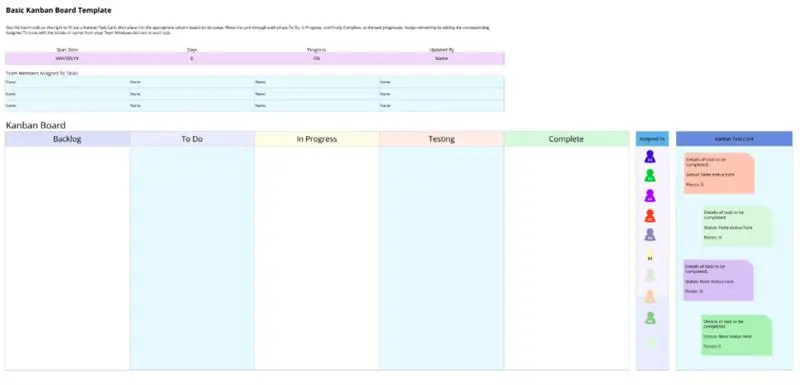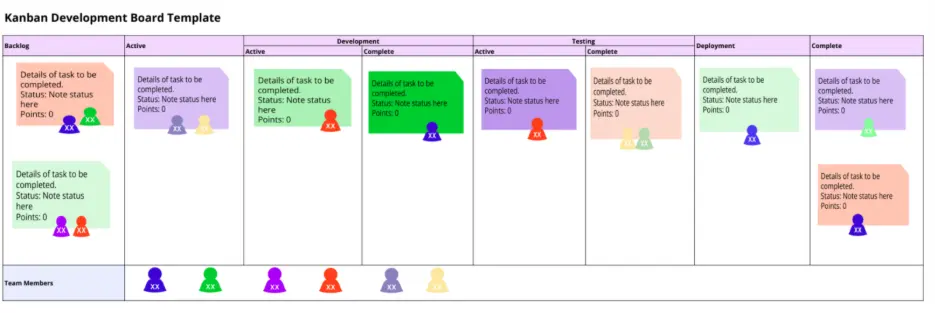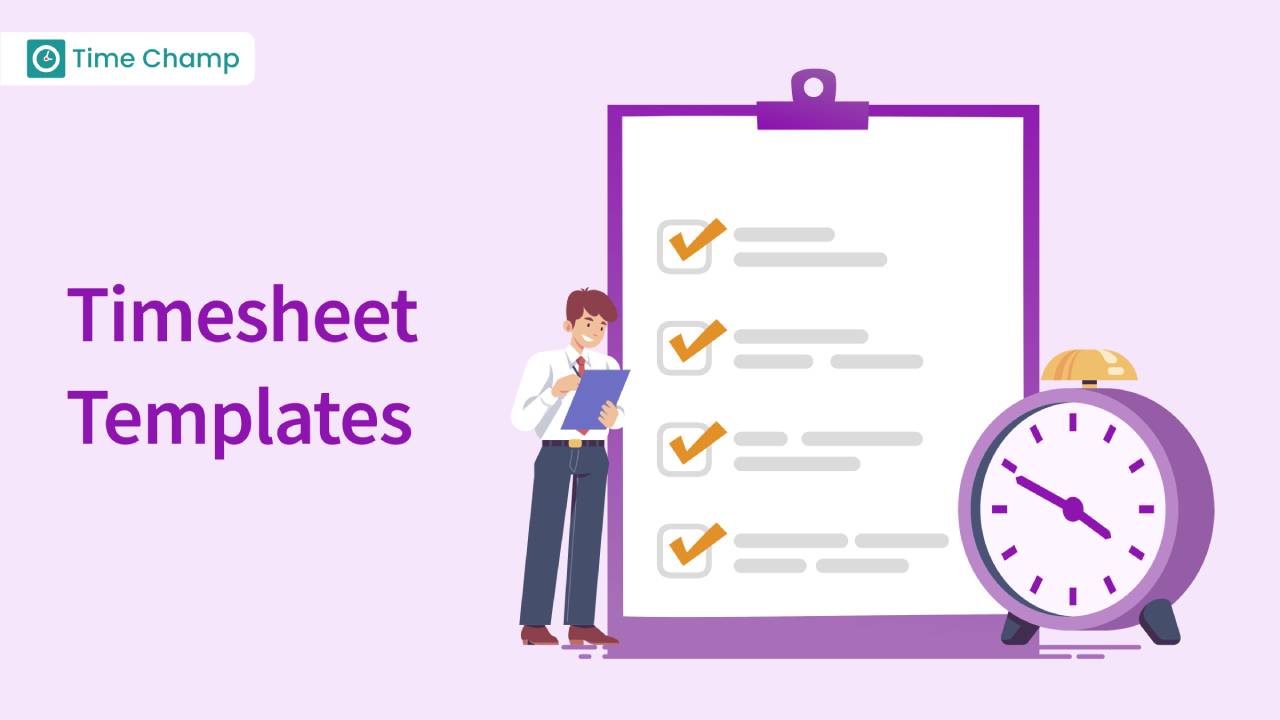We’ve crafted a collection of the most practical and easy-to-use kanban board templates to help you bring order, focus, and flow to your work. Whether you’re a project manager juggling multiple tasks, a scrum master leading sprints, or a team member tracking daily progress, these templates are designed to make task management effortless. Each one offers a visual, structured way to plan, prioritise, and stay aligned, so your team can work smarter, not harder.
What Are the 4 Types of Kanban Board Templates?
There are various types of kanban board templates, each of which is adapted to the workflow and teams. Regardless of the complexity of the list of to-do tasks or big multi-stage projects, these templates will allow visualising progress, enhancing focus, and ensuring that tasks are organised. The following are the most popular templates of kanban boards that simplify work and enhance efficiency among various teams:
1. Basic Kanban Board Template
The simplest and most popular type of kanban is the basic kanban board template that provides a visual and clear way to manage any workflow. It divides the tasks into distinct phases like Backlog, To Do, In Progress, and Done, and thus enables you to monitor progress easily. Having a flexible structure, this template can easily adjust to individual and team-based task management.

Key Features:
- Workflow Visualisation: Displays all tasks in a clear, column-based layout, showing exactly where each task stands. This simple view minimises confusion, promotes transparency, and keeps everyone aligned.
- Drag-and-Drop Management: Easily move tasks between stages as progress happens. The intuitive interface allows real-time updates without needing any complex setup or tools.
- Customisable Columns: Standard columns like To Do, In Progress, and Done can be modified to match your workflow, and add stages like Backlog or Under Review to better suit your team’s process.
- Task Prioritisation: Use colour codes, tags, or labels to highlight urgent or high-impact tasks. This helps maintain focus on key priorities and makes sure every critical task gets the attention it deserves.
- Progress Tracking: Get a clear overview of how work is moving through the pipeline. The template makes it easy to identify bottlenecks, track task flow, and assess performance for ongoing improvements.
Best For:
Individuals, small teams, freelancers, or startups who prefer a simple approach to scheduling their everyday tasks, monitoring the project development, and keeping a clear picture of their work.
2. Kanban Board Spreadsheet Template
The next type is the Kanban board spreadsheet template, a structured format that helps teams organise and manage tasks using a simple, table-based layout. It allows teams to organise work, distribute tasks and track the progress of the work in different stages. You can include key details such as task type, owner, priority, estimated hours, and story points for clear planning. The template also allows the management of the sprints, which assists in determining timeframes, the tasks completed and the performance during each cycle

Key Features:
- Spreadsheet Workflow: Columns represent workflow stages, showing tasks, owners, and deadlines in a clear, organised grid.
- Formulas & Filters: Use built-in functions to track progress, highlight priorities, and flag overdue tasks automatically.
- Custom Fields: Add or adjust columns for task type, priority, or assignee, making it easy to focus on relevant work.
- Collaboration: Multiple team members can edit simultaneously in Google Sheets or Excel Online, keeping everyone updated.
- Progress Tracking: Visualise task completion and workload with simple charts or colour-coded cells for quick insights.
Best For:
Small to mid-sized teams and managers or freelancers who like to use spreadsheets to organise their projects and have a lightweight and shareable kanban tool without the use of specific software
3. Sprint Kanban Board Template
The sprint kanban board template is designed specifically for Agile teams to plan, track, and complete work within a sprint cycle. It organises tasks into stages aligned with sprint goals, providing clear visibility on task status, workload distribution, and team progress. This template assists the teams to remain concentrated, coordinate priorities, and provide timely deliverables at every sprint.

Key Features:
- Sprint-Focused Workflow: Columns are structured to reflect sprint stages, such as Backlog, In Progress, In Review, and Done, making it easy to track progress within each sprint cycle.
- Story Points & Task Estimation: Assign story points or effort estimates to tasks, helping teams measure workload, plan capacity, and balance responsibilities effectively.
- Priority Management: Tasks can be labelled or colour-coded by urgency or importance, allowing the team to focus on high-priority items first.
- Progress Monitoring: Track completed tasks, remaining work, and overall sprint velocity to evaluate team performance and identify bottlenecks.
- Collaboration & Updates: Team members can update task status in real time, ensuring transparency and enabling smooth communication throughout the sprint.
Best For:
Agile teams, product managers and software development teams that adhere to sprint cycles and require a structured and visual tool to plan, execute and monitor tasks successfully in short-term iterations.
4. Kanban Development Board Template
The kanban development board template is used to monitor activities throughout the entire software development process. It allows teams to create numbered kanban cards, assign them to team members, and move them through stages such as Backlog, Active, Development, Testing, Deployment, and Complete.
This template gives a clear view of project progress, helping teams stay organised and ensure consistent, on-time delivery.

Key Features:
- Structured Development Workflow: Organise tasks across all development stages, from backlog to deployment, ensuring each task is tracked until completion.
- Task Assignment & Tracking: Assign responsibilities to individual team members and monitor task movement in real time, maintaining accountability and clarity.
- Progress Visibility: See the status of all active tasks at a glance, identify delays, and ensure the sprint or project stays on schedule.
- Agile Sprint Support: Supports agile practices by tracking tasks through sprint stages, enabling teams to manage workload and measure progress effectively.
- Team Collaboration: Facilitates smooth coordination among developers, testers, and project managers, keeping everyone informed and aligned.
Best For:
Scrum masters, software development teams, project managers, and Agile teams need to monitor the progress of the task that needs to be done in the development lifecycle and maintain the entire team on track and focus on their delivery on time.
What Are the Pros and Cons of Kanban Board Templates?
Kanban board templates simplify task management and provide a clear visual representation of work progress. While Kanban board templates make tracking tasks easy and organised, they may not be ideal for very large teams or projects with complex workflows. Here’s a clear overview of the advantages and disadvantages:
| Pros of Kanban Board Templates | Cons of Kanban Board Templates |
|---|---|
| Provides a clear visual overview of all tasks and their status. | It can become cluttered when handling large projects or many tasks. |
| Helps teams focus on priorities and manage workload effectively. | Does not automatically enforce deadlines or timelines. |
| Flexible and can be adapted to different workflows and processes. | Requires regular updates to stay accurate and useful. |
| Promotes transparency and collaboration among team members. | Offers limited built-in reporting and analytics features. |
| Easy to set up and use with templates in digital tools or spreadsheets. | May not capture complex project dependencies without additional tools. |
How Does Time Champ Improve Task Flow with Kanban Board?
Instead of relying on manual spreadsheets or juggling multiple tools to monitor tasks, Time Champ gives you an automated kanban board framework that keeps everything centralised in one place. You can view all your projects, tasks, and assignments on a single dashboard, reducing confusion and saving valuable time.
You can personalise the boards to match your team’s workflow by adding columns, swimlanes, and labels, while real-time updates keep everyone informed about ongoing progress. Prioritising tasks with tags and deadlines helps your team stay focused on what matters most and keep progress consistent throughout the project.
Collaboration becomes effortless as you and your team can comment, assign tasks, and share updates directly on the board. As a manager, you can track performance with visual indicators and reports, quickly spot bottlenecks, and make data-driven decisions. Integration with calendars and other tools helps you keep everything synchronised across platforms. Replacing manual tracking with automated, real-time kanban boards in Time Champ allows you to streamline workflows, improve team coordination, and ensure every project stays on track.
Conclusion
Kanban board templates simplify the management of tasks as they make it more visual, organised and efficient to allow the teams to remain on track with the work and ensure the progress remains smooth. With flexible columns, clear stages, and easy prioritisation, they keep workflows transparent and reduce bottlenecks. Choose the template that fits the style of your team and the project requirements to optimise productivity, improve the collaboration process, and make sure that all tasks run in the right direction.
Frequently Asked Questions
Yes, kanban board templates are flexible enough for individual use. They help you organise personal tasks, track progress, and maintain focus on priorities without needing complex software.
For maximum effectiveness, update the board daily or as tasks progress. Regular updates ensure accuracy, visibility, and smooth task flow.
Consider your workflow complexity, team size, and project type. Basic boards are used with small teams or in individual tasks, whereas complex templates with swimlanes and tracking options are used with larger teams or agile teams.
Absolutely. These templates visually display how tasks move through each stage, making it easier to identify delays, overloaded sections, and areas that need improvement.





